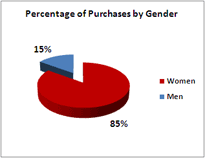First, I really have to thank Maria Sciullo for responding — I’m not sure that many reporters would. Here is her response:
Albert, I see your point and am sorry if you believe I have painted your generation (again?) with a broad brush. I did not set out to bash your generation, in fact, the story idea came from two of my colleagues, both under 27 years old.
I appreciate your opinion. Incidentally, the Beatles were before my time.
Maria
While I did appreciate the response, shockingly, I wrote a long clarifying email.
Hello Maria:
I appreciate your response and sorry for my own delayed one.
Perhaps it is unintentional, but I don’t think it’s difficult to see where I (and many other more silent individuals my age) might take offense. I will concede that we are a little hypersensitive — there are a whole lot of books, web sites, consultants and “experts” who seem to feel the need to proclaim something profound about our generation, much of it negative. This sensitivity is especially true for our generation of men, who seem to be written off as parents’-basement-dwelling slackers who, as you quote, seem to be suffering from a “failure to launch”. Is it really that extreme to think that a title like For some 20-somethings, growing up is hard to do might arouse some suspicion that it’s not an article that reflects well on Gen Y?
As for the Modern weddings a social conundrum article, I concur that social media platforms do complicate the wedding scenario, an event that is already a minefield. It just seems so foreign to me that anyone would be offended by a lack of wedding invitation from anyone other than the closest of friends. Facebook is not a great indicator of friendship regardless of the connection terminology (and, for the record, Twitter is about “followers”, not “friends”), as demonstrated by my nearly 640 friends. While I do have a more-than-just-hello-in-the-hall relationship with each person in that group, few would expect to attend my own theoretical nuptials. I’m not discrediting the premise, I just think that you could easily focus on technology and its challenges versus an age group.
Finally, it is good to know that the idea came from a couple of individuals who are within the age range of the group about which you’re writing. However, I don’t think that’s justification for two articles that aren’t particularly accurate (for instance, I would equate that defense with me feeling free to use the word “faggot” anytime I want because I have gay friends).
There are plenty of examples of people who are around my age and are doing extraordinary things. I would have no problem saying that individuals of my generation are incredibly talented and have already accomplished a great deal in our short lives (we wouldn’t have Facebook to complain about if a college kid in a dorm room hadn’t invented it). Here in Pittsburgh, we have so many examples of 20-somethings who have tried to change their own little piece of the world (the P-G’s own Annie Tubbs does a great job of this in her Right Here series). I suggest taking a look at Brazen Careerist to find a group of like-minded Gen Yers who are doing what they can to make an impact. My generation has plenty of warts, but we’re a whole lot better off than we’re credited.
Thank you again for your time.
Regards,
Albert
My only regret in my response is a missing P.S. — I don’t believe that the Beatles are before anybody’s time.








